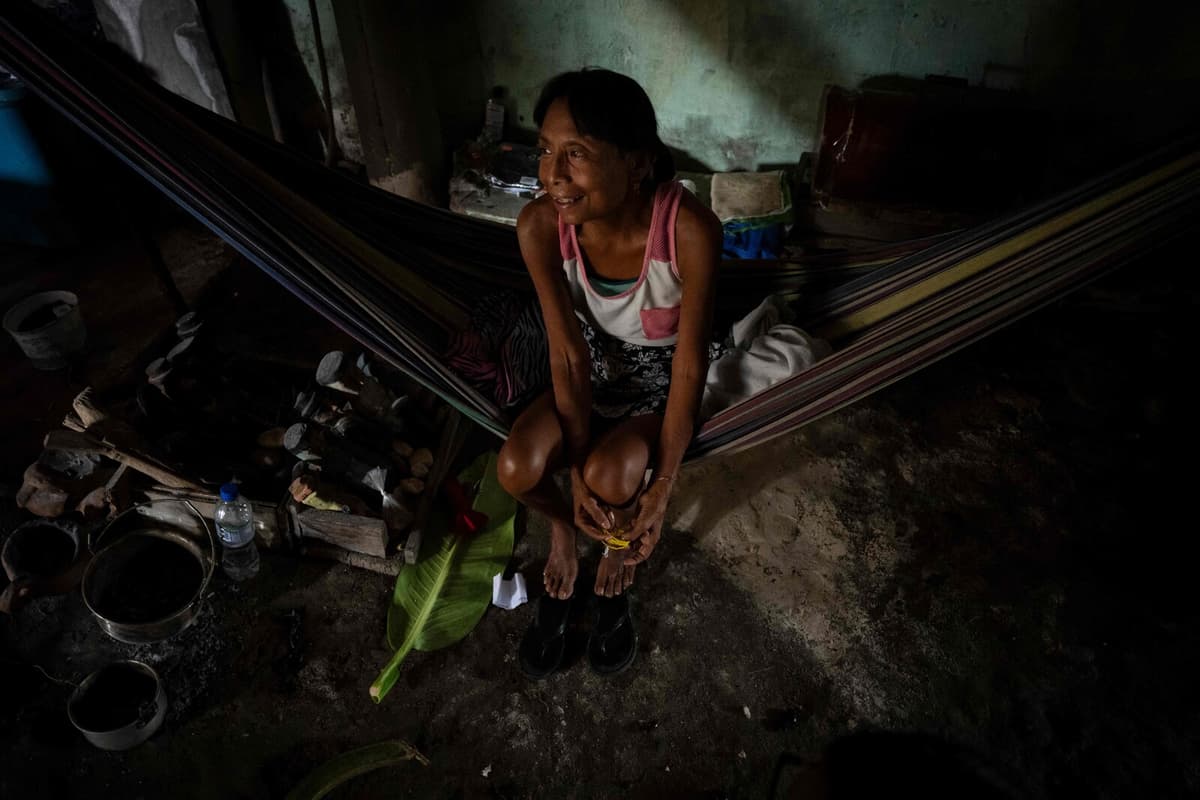Once, the sound of children's play was heard on the then overpopulated island, where people from the indigenous people guna moved over 100 years ago. But a year ago, Gardí Sugdub was evacuated, and 1,200 inhabitants – including many families with children – moved to a new life on the mainland.
The evacuation was one of the first major migrations in Latin America made due to climate change in modern times.
Delfino Davies runs a small museum on the island. He says that the move has left the remaining inhabitants in mourning and that Gardí Sugdub, which is located about a kilometer from Panama's northern coast, is now quiet as a "dead island". The winding alleys with small wooden and metal houses remain, but the silence is palpable.
There are no friends left, or children playing, he says to AFP.
Staying on the island
He is one of around 100 people who have decided to stay on Gardí Sugdub (Crab Island). This also includes 47-year-old Mayka Tejada, who works in a store on the island.
There is no one here. Sometimes I get sad when I'm alone, she says.
Her mother and two children, 16 and 22 years old, have moved to the completely new residential area Isber Yala on the mainland, a short boat ride away. There, the Panamanian government has built 300 houses in neat rows for people who have been evacuated. But there are not enough homes for everyone, as the planning began over ten years ago when the island had fewer inhabitants,
.Mayka Tejada misses her children, but they are happy on the mainland, she says.
"Nothing sinks"
The densely populated island measures about 150 meters by 400 meters and is one of 49 inhabited islands in the Guna Yala archipelago, also known as San Blas. According to researchers, the entire archipelago may be gone in the sea by the next turn of the century. Some observers believe it may be uninhabitable as early as 2050.
In a hammock in her home sits Luciana Pérez.
I was born on Gardí and I will die here. Nothing sinks. The researchers do not know, only God, she says.
She adds that she is not afraid because she has seen big waves and floods all her life. But according to researcher Steven Paton at the Smithsonian Tropical Research Institute (STRI) in Panama, the sea level is expected to rise by up to 80 centimeters, and most of the islands in Guna Yala are about 50 centimeters above sea level.
In the end, it will not be sustainable for the islanders to stay on these islands, he says to BBC.
According to the Panama Canal Authority ACP, the sea level is rising by at least five millimeters per year, says Steve Paton, who has collected information in Panama for over 30 years. In some circles, he is called Doctor Doom due to his predictions for the future.
Same traditions
More and more people in the world are being forced to flee due to climate change caused by human dependence on fossil fuels. In many cases, they leave their homes unplanned and end up in overcrowded camps or other types of settlements where the infrastructure is not sufficient. But for the climate refugees from Gardí Sugdub, the new residential area offers a better standard of living and more space.
However, the new means a big change. Museum curator Delfino Davies, who has stayed on the island, believes that the people's essence, the culture, is there. But those who have moved are trying to hold on to their traditions.
My identity and my culture will not change, only the houses have changed, says Sayla "Tito" López, leader of the guna people in Isber Yala, to BBC in a community center in the new area.
As long as this meeting house remains, the heritage of the guna people will persist.
Big differences
75-year-old pensioner Magdalena Martínez, who has moved to the new Isber Yala, tells about the differences between the island and the mainland.
We lived crowded and I had to fetch water from the river in a small boat, she says.
On the island, there are narrow gravel roads with muddy water puddles during the rainy season. In the new area Isber Yala on the mainland, the roads are paved and have sidewalks. The nearly 50 square meter large concrete houses have water toilets, and there are plots with space to grow vegetables.
There is water for one hour every morning.
I can fill the buckets, and I have electricity around the clock, says Magdalena Martínez.
She realizes that she herself may not get to experience it, but she can see what awaits her home in the future.
The islands will disappear because the sea will reclaim its territory.
The mountainous country of Panama is located between Costa Rica and Colombia, on the narrow isthmus that connects North America with South America.
The country is thus very narrow and has long coastlines towards the Pacific Ocean in the south and the Caribbean Sea in the north. The canal between the two seas divides the country in two and is extremely important for international shipping.
The capital is also called Panama, which is often clarified as Panama City in English, Ciudad de Panamá in Spanish. The country has over 4.5 million inhabitants.
The indigenous population is estimated to account for just over a tenth of the inhabitants. Most Panamanians have mixed origins, mainly from Europeans and indigenous peoples.
Source: Landguiden/UI





